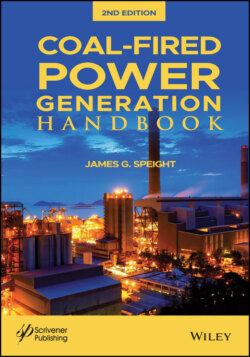Читать книгу Coal-Fired Power Generation Handbook - James Speight G., James G. Speight - Страница 27
1.6.5 Other Definitions
ОглавлениеWhile the definitions presented above are in common use, there are other systems of resource/reserve definition and nomenclature that are similar to the definitions used above (EWG, 2007) and also deserve mention here.
The definition of resources according to the scheme of the World Energy Council (WEC) involves the estimated additional amount in place, which is the indicated and inferred tonnage of coal additional to the proved amount in place that is of foreseeable interest. This definition includes estimates of amounts that could exist in unexplored extensions of known deposits or in undiscovered deposits in known coal-bearing areas, as well as amounts inferred through knowledge of favorable geological conditions. Speculative amounts are not included.
The definition of reserves according to the scheme of the WEC is the proved amount in place, which is the resource remaining in known deposits that has been carefully measured and assessed as exploitable under present and expected local economic conditions with existing available technology. On the other hand the proved recoverable reserves is the tonnage of coal within the proved amount in place that can be recovered in the future under present and expected local economic conditions with existing available technology.
The estimated additional reserves recoverable is the tonnage of coal within the estimated additional amount in place that geological and engineering information indicates with reasonable certainty might be recovered in the future.
The International Energy Agency (IEA), BP Statistics (as in the BP Review of World Energy) and most other organization typically use the term Proved reserve (proven reserve) which is equivalent to the proved recoverable reserves as defined by the World Energy Council.
The US Energy Information Agency (EIA) uses nomenclature such as the demonstrated reserve base, which covers publicly available data on coal mapped to measured and indicated degrees of accuracy and found at depths and in thick coal-beds considered technologically minable at the time of determinations. On the other hand, the estimated recoverable reserves (which corresponds to the proved recoverable reserves of the World Energy Council and to the proved reserves of the BP Review of World Energy) cover the coal in the demonstrated reserve base considered recoverable after excluding the coal estimated to be unavailable due to land use restrictions or currently economically unattractive for mining, and after applying assumed mining recovery rates. In addition, the recoverable reserves at producing mines represent the quantity of coal that can be recovered (i.e., mined) from existing coal reserves at reporting mines.
Other national geological agencies use different definitions, such as the German Bundesanstalt für Geowissenschaften und Rohstoffe (BGR), which uses the terms (i) reserves, which is equivalent to the proved recoverable reserves (WEC), and (ii) resources, which include discovered but not yet economically producible amounts and undiscovered but estimated accumulations of coal. This includes the resources as defined by the WEC as well as any other possible coal deposits.
